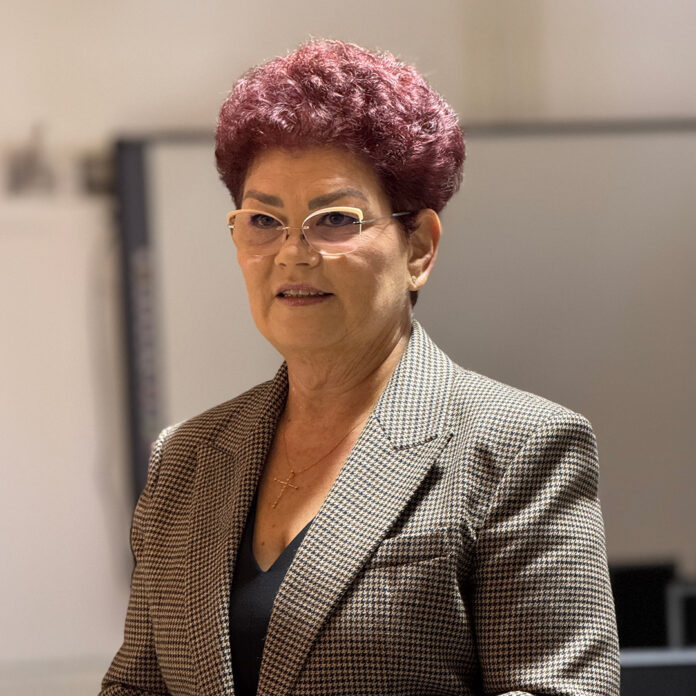A Necessary and Timely Modernisation of Romanian High Schools,
A project endorsed by Ariana Bucur, Romanian Member of Parliament
The reform of the high school framework plans, recently launched for public debate by the Ministry of Education and Research, marks a crucial and much-needed step in modernising Romanian secondary education. The proposed changes aim to bring the curriculum in line with 21st-century needs, increasing institutional autonomy and ensuring a better match between students’ learning paths and future career choices.
However, the reform also raises important questions around equity, feasibility, and teacher preparedness. A key issue is the alignment between the European key competences and the graduate profile outlined in the new curricular architecture.
Increased Autonomy and Flexibility in Curriculum Planning
Shift Towards Personalized Learning Paths
One of the most significant changes is the reduction in the number of core curriculum hours (TC) in grades 11 and 12. This allows more time for the specialised curriculum (CS) and curriculum at the student’s decision (CDEOȘ).
Schools now have greater autonomy to design optional subjects, training modules, or interdisciplinary offers. The new framework introduces the flexible curriculum component, which schools can adapt in partnership with local employers or universities. Students can choose optional subjects that align with their interests or future career goals, including intensive study of certain disciplines.
This structure enables personalised educational pathways, better aligning student interests with potential university or vocational routes.
Outdated Curriculum Gets Long-Overdue Update
Responding to Societal and Technological Changes
The previous high school framework plans, developed largely between 2004 and 2009, no longer reflect today’s societal and educational landscape. With rapid digitalisation, changing labour market needs, and the growing emphasis on STEM education and lifelong learning, an overhaul was long overdue.
The new plans introduce a better balance between:
- Cultural and identity education (e.g., Romanian grammar, national history, geography)
- And expansion of STEM and career-oriented subjects, supported by academic and professional communities.
This updated curriculum structure reflects international education trends while preserving national educational identity.
Equity: The Reform’s Greatest Challenge
Addressing Systemic Gaps Between Schools
A well-designed curriculum is only as good as its implementation. High-performing schools, especially in urban areas, are likely to benefit from the reform thanks to their existing infrastructure, qualified staff, and student performance levels. In contrast, schools in rural or disadvantaged areas may struggle to provide meaningful optional subjects.
To prevent deepening inequities, the Ministry must implement:
- Financial support for training teachers and developing CS/CDEOȘ programs
- Monitoring systems to track student literacy and dropout risks
- Targeted support for at-risk pupils and realistic piloting across all types of high schools – theoretical, technological, and vocational
Without these measures, the reform risks reinforcing existing disparities in Romania’s education system.
Teacher Norms and Workload: A Sensitive Balance
Potential Tensions and the Need for Clear Communication
Reducing the number of compulsory hours and increasing student choice may lead to lower teaching loads for certain subjects. This could cause tensions within the teacher community, especially in disciplines perceived as less essential.
To mitigate this, the Ministry must ensure:
- Professional retraining and interdisciplinary upskilling
- Real tools for mobility, not just bureaucratic guidelines
- A clear communication strategy to prepare the education workforce for the transition
Supporting teachers is critical to the reform’s success.
What Happens to the Baccalaureate?
Assessment Reform Must Align with Curriculum Reform
Students and teachers alike need clarity on how final assessments (the Baccalaureate) will reflect the new curriculum structure. If optional subjects and flexible modules are not included in the exam design, they risk being perceived as unimportant or „secondary.”
A coherent redesign of the Baccalaureate is essential to:
- Motivate students to engage with optional learning paths
- Ensure fair recognition of diverse educational trajectories
- Maintain consistency between curriculum and assessment
Without this, the core vision of personalised education will be undermined.
Conclusion: What Kind of Graduate Do We Want by 2030?
The proposed framework reform is not just about number of hours or subject categories. It’s a broader conversation about what kind of graduate Romania needs in 2030 – one who is competent, adaptable, and equipped for the demands of a fast-changing world.
For this reform to succeed, it must be supported by:
- Curricula aligned with real-world changes
- A strong focus on equity
- Investments in teacher training and infrastructure
- Transparent guidelines for the future of final assessments
- Annual impact evaluations to track effectiveness
This is a courageous step forward – but also a moment that requires clear vision, stakeholder involvement, and deep commitment to inclusive and future-ready education.
Informează-te inteligent numai cu GPINews.live şi TVGPINews.





